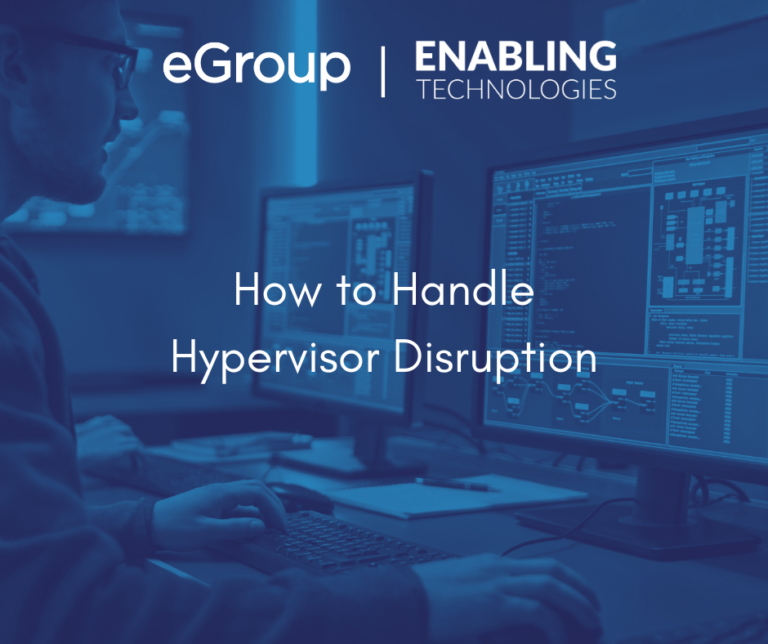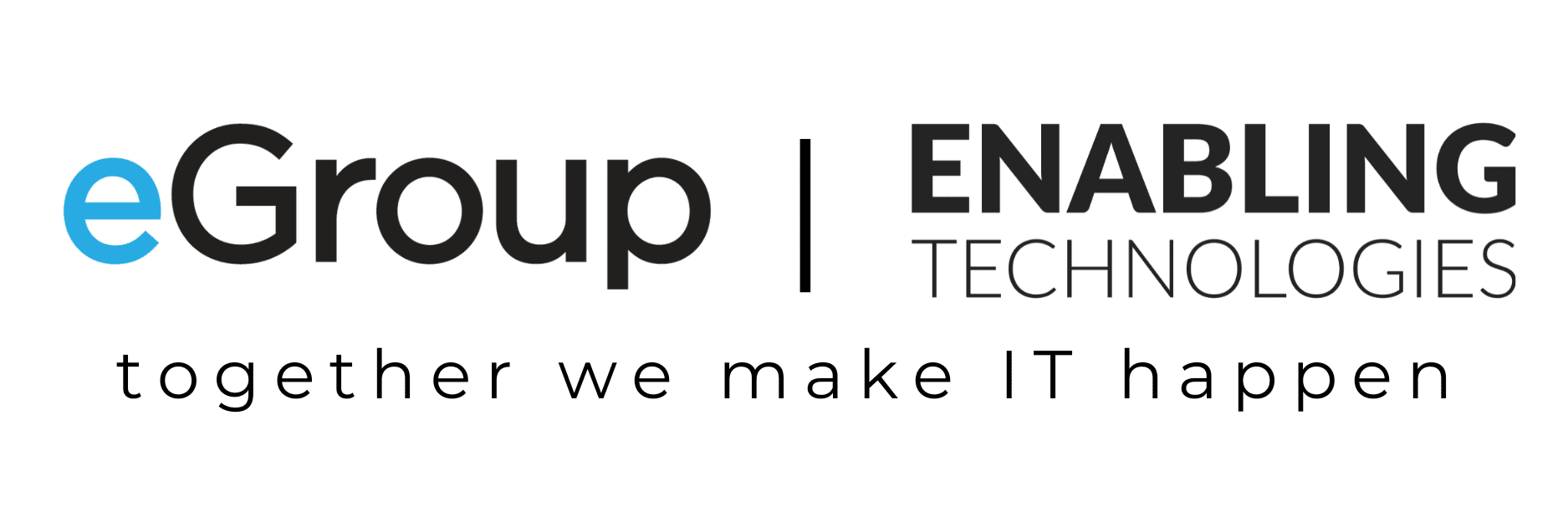How to Handle Hypervisor Disruption


Chris Stegh
CTO & VP of Strategy - eGroup Enabling Technologies

Mike Dent
Director of Data Center Architecture and Solutions Engineering - eGroup Enabling Technologies
VMware has streamlined its portfolio and transitioned to a subscription model. The impact on some VMWare customers has been significant, specifically with the renewal process and the new core licensing requirements. The purpose of this blog is to provide an update on the trends being seen and to outline some conceptual options. Our team is working hard to minimize the impact and to develop, where appropriate, alternative options.
Table of Contents
What’s Trending?
VMware transitioned from perpetual licensing to a subscription model in December 2023. Since then, we have seen some customers’ renewals increase 2-3 times the amount of their last renewal. The jump is not solely due to the subscription model itself, but rather the breadth of the new bundles and their minimum requirement for Core licensing.
New Terms and Technologies Affected
First, VMware Cloud Foundation and VMware vSphere Foundation are the new subscription-only offers. VMware Cloud Foundation (VCF) is a full stack bundle that offers vSphere, vSAN, and NSX with the Aria management and orchestration suite. VMware vSphere Foundation (VVF) is VMware’s solution for data center optimization in traditional vSphere environments. It includes Tanzu Kubernetes Grid, Aria Operations, and Operations for Logs.
Many VMware software solutions will no longer be available as standalone purchases and are now part of VCF or VVF. Notably, the vSphere Enterprise+ edition is no longer available for new purchases, but will continue to be available for renewals for customers who are active on Support and Subscription Services (SnS).
Additionally, customers with lighter requirements such as basic hardware consolidation or virtualization on a very small number of servers can still purchase subscriptions to vSphere Standard and vSphere Essentials Plus Kit (the 3-node maximum still exists, as well as a max 96 CPU limit).
VMware’s announcements on the changes can be found at vSphere Enterprise Renewals and VMware End Of Availability of Perpetual Licensing and SaaS Services.
Reason Behind the Increase
The subscription model also includes a significant change to the minimum compute requirements. Effective January 1, 2024, all VMware licensing is now based on Cores rather than Sockets, and requires a minimum of 16 cores per CPU. VMware provides an explanation and a calculator for Counting Cores for VMware Cloud Foundation and vSphere Foundation and TiBs for vSAN.
In the past, if you had a dual-socket server, this would require two (2) licenses. With the new licensing model, you must license each CPU in a minimum quantity of 16, which means for a dual-socket server, you must license 32 cores per host. Customers who utilize CPUs with less than 16 cores effectively pay for 16 cores in each case, regardless of the actual number of cores in the CPU.
The requirement of 16 cores per CPU can dramatically increase the cost for organizations, as does the inclusion of the other VMWare SKUs that are in the bundles, whether they are used or not. A la carte options are limited.
Alternatives
In order of speed (not cost considerations), customers have the following options (from fast to slow):
- Continue to renew VMware licensing.
- Transition to Azure VMware Solution (AVS), an Infrastructure-as-a-Service private cloud that runs the VMware software stack on dedicated bare-metal servers within Azure.
- Move to an alternative Hypervisor. While there are other Hypervisors on the market that can be leveraged for smaller environments or test/dev, for production/enterprise, eGroup Enabling Technologies’ customers are very happy with Nutanix and their Acropolis Hypervisor (AHV).
- Migrate to VMs running on Azure or AWS (lift and shift).
- Modernize the app (using PaaS, serverless, and other cloud-native technologies).
- Move to a true full SaaS platform.
At eGroup Enabling Technologies, we can help you navigate these required changes and guide you with alternative options that can help lower the cost while still providing organizational benefits.
Suggestion: Start Early
VMware advises existing customers with products at the End of Availability (EOA) to contact their VMware rep or partner at the time of renewal to align with the updated portfolio. However, eGroup Enabling Technologies has seen enough frustration and concern among customers due to the changes that we recommend getting numbers in front of your management soon so that if a renewal is inevitable or a change is possible, you have as much advanced notice as possible.
We do not believe that a knee-jerk reaction is the right course for organizations, but we prefer to help you understand your options. Contact our team below to have your questions answered!
For more information, view our recent webinar VMware Renewals: Evaluating Your Options for Making Informed Decisions.
Connect with an expert.
Complete this form to schedule time with our team of experts.
Last updated on July 25th, 2024 at 05:38 pm

